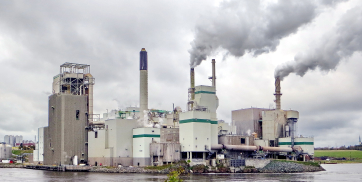Over the years, we’ve received many requests for high-quality methane training. In response, Highwood Emissions Management has teamed up with SAGA Wisdom to deliver a best-in-class methane emissions education and training curriculum for oil & gas professionals.
I’m thrilled to be the instructor for the first course, designed to equip energy professionals with the knowledge and skills needed to tackle methane emissions. The course, Fundamentals of Methane Emissions Management, provides an in-depth understanding of methane properties, sources, management strategies, and future trends. The course is split into two parts, and each is designed to take about one day to complete.
This article provides an overview of the course and a offers a special promotion for new students. This course is a pre-requisite for several more methane-related courses that are coming later this summer, so stay tuned or get a sneak peek here.
Part 1: Sources and Estimation
Basics, Properties, and Sources of Methane – Chapter 1 starts with the basics, including methane’s chemical properties, characteristics, and its role in our society and economy. Next, we cover global source and sinks of methane, distinguishing between natural sources (e.g., wetlands) and anthropogenic sources (e.g., agriculture, energy).
Methane in Oil and Gas – Methane sources in O&G are diverse, spanning venting, leaking, methane slip, and process failures. We cover these sources and provide a brief history of academic research in methane emissions, including how our understanding of the challenge has evolved over the past decade. We finish Chapter 2 by introducing Highwood’s holistic emissions management process, revealing how we approach methane emissions management from start to finish.
Estimating Methane Emissions – The final chapter in Part 1 is all about estimation. Accurate data is critical for effective emissions management, but getting it right is extremely difficult. We provide an overview of the tools and methodologies used to measure and track methane, including bottom-up inventories, direct measurement, and methane reconciliation.
Part 2: Mitigation and Innovation
Regulatory and Non-regulatory Drivers – The drivers behind methane reduction efforts are complex and rapidly evolving. We discuss approaches to methane regulations internationally and highlight specific regulators (e.g., EPA, CDPHE, AER, EU). We then look at voluntary initiatives that go above and beyond regulations, such as OGMP 2.0, MiQ Gas Certification, and the Veritas Protocols.
Methane Abatement Strategies and Technologies – Reducing methane emissions – the ultimate goal – requires a combination of strategies and technologies. We’ll cover the range of options, including capture, destruction, conservation, and repair. You’ll learn about common project types, how to evaluate them with marginal abatement cost curves, and best practices for equipment design, maintenance, data collection, training, and collaboration.
Advancements and Trends – In the third and final chapter we cover innovation in technology and software, advanced models and tools, and the trends I anticipate in regulations, markets, data, and stakeholder expectations. The landscape of emissions regulation and technology is constantly evolving, and staying ahead of these trends is vital for long-term success.
Take the Next Step: Enroll Today with a Special Offer
I invite you to take the next step in mastering methane emissions management by enrolling in Fundamentals of Methane Emissions Management. We are currently offing a special promotion to celebrate the launch of our methane educational offering and partnership with SAGA Wisdom. Contact us to learn more!





